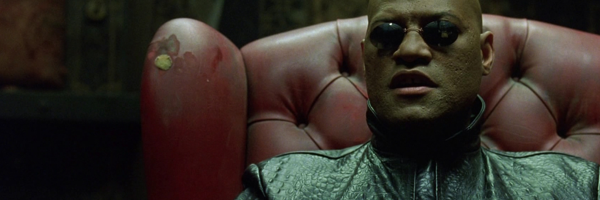Projects can be long and complex, but there’s one card I play often from my personal deck of solutions: the project initiation workshop, an activity that takes about one day and is done at the start of the project.
This workshop inherits a lot from the techniques I learnt from Dave Gray, James Macanufo and Matt Moraski of XPLANE fame, and the related book, Gamestorming. In the past I have done several variations of this workshop, due to differences in size, scope and team composition. Pretty much every time I change something to adapt to the client, and to improve from the previous one, but there are several key elements that appear almost every time in some form or another.
This is the outline of one of the latest workshop I did, with about 8 participants:
- Ice Breaker (30 min)
- Plus/Delta (60 min)
- User Needs or Empathy Map (60 min)
- The One Sentence (60 min)
- KPIs (30 min)
- Wireframes (60 min)
Each of these tasks is built roughly in four phases, according to the Boosted Brainstorming theory: Explanation, Generation, Gathering, Summary (EGGS).
Ice Breaker

This is the very first exercise and is meant to break the ice with a simple, very simple task that has nothing to do with the process but has the objective of getting the people comfortable with each other and making them try how the workshop will work.
A few examples of ice breakers:
- Each person writes their name and sketches a pie chart to represent how they spend their time on any given day.
- Each person writes their name and sketches one thing or place they like and it’s important in their personal life.
- Each person writes their name and sketches a sticky figure of something they like to do in their spare time.
After they do the exercise, each person can either describe their own, or give the drawing to the person on the right and they have to guess what that is. In this way you combine the three elements of the workshop activities: explanation, working and discussion.
Plus/Delta

This is taken straight from the Gamestorming playbook. Each person will just list on post-its the things they think are valuable in the existing product/service (plus) and improvements that could be made (delta). Then they tell everyone else what they are, clustering the results on the wall and triggering a discussion along commonalities and differences of each individual opinion.
This is very effective because it brings out negative aspects early in the discussion, to avoid them poisoning the rest of the day. Using ‘delta’ instead of ‘minus’ might also seem a detail since they are factually the same thing, but that difference supports a shift of mindset toward problem solving that is very helpful.
User Needs or Empathy Map

This is probably the most difficult exercise because it asks people to put themselves in the shoes of others, and it’s the one that I change most often to fit the kind of project or team I’m working with.
The user needs approach implies everyone writing on post-its a sentence in the form of “I am <role> and I need to <need>”. This sentence helps people to change perspective and define things different people will have to do on the platform or service is going to be built in the project.
The empathy map approach is again taken directly from Gamestorming, you can read more about it here.
The One Sentence

In this exercise you’re playing a role as hard as Morpheus in The Matrix: finding Neo, the one. The one sentence is a short, meaningful sentence, that defines as narrowly as possible the focus of the project.
This sentence will then be used as a reference point for the whole length of the project, and added on the first page of every deliverable. It’s a key element to create a shared understanding and validate choices for the whole length of the project. It acts as a lighthouse.
The exercise is split in two:
- First, every person in the working team needs to take time, alone, without talking, to write down three keywords (no more, no less, ideally) that they feel identify uniquely the project. Then as usual they get up and explain their choices to the room, putting the post-its on the wall and clustering them.
- Second, you have a wall full of keywords and the facilitator of the workshop (you, I guess) will have to write the first straw-man sentence using these keywords. As a guide for the first time until you get comfortable with this first draft, you can imagine something in the form of “This project is a X that will achieve Y through Z”. Then you ask everyone in the room to change it to make it work, using the keyword of the first step as a guide.
- Repeat the refinement as long as the time allows, trying to strike a balance between a broad, non-specific sentence (“This project is a platform that will increase the number of sales by using Facebook”) that can apply to anything, and one that’s too specific (“This project is a iPhone 5 App that will allow everyone to talk with our marketing team directly within 10 minutes by a VoIP call initiated through Twitter”). In other terms, the sentence must be the broadest definition possible that is unique for the project and company.
This exercise is difficult and can be frustrating, especially in the second step. It’s important for the facilitator here to keep the morale of the group up and to change things round when the group gets stuck.
KPIs

With the previous exercises done it should be easy to come up with KPIs. There are various techniques that could be used here, one I use often is to ask people to write them in post-its and then place them on a wall where there’s a line creating an axis between “qualitative” and “quantitative”.
Then people will vote (using a technique like the dot voting) and then you pick the top 2-4 metrics, ideally with at least one from each side of the continuum to strike a balance between qualitative and quantitative.
Wireframing

I believe of course in the power of visualization and that’s why I usually close with a less intense exercise: I split the work team into groups and I ask them to sketch how they think the homepage or first screen of the new service is going to be. This is a way to summarise visually a whole day of discussions, and provides the designer with a first draft of concepts to work directly on.
The wireframes can be easily reported back almost as-is in a digitised form to summarise the findings and make the discussion progress to the next steps.
As you can see, this workshop is quite intense both for the facilitator and the team and is usually quite exhausting. It lasts roughly 5 hours that with the mandatory breaks (at least three, one of which is lunch) takes a whole day.
I’ve done shorter versions (half-day) a couple of times, but it’s more challenging and skips some steps, so I would advise to start doing the full one before having seen a full one working.
If you want more ideas, I recommend Gamestorming. It’s an excellent reference book to understand the topic better and to pick ideas from.
Thanks to Mike Thompson, one of the friends and colleagues of mine that helped me most in creating this project initiation workshop.